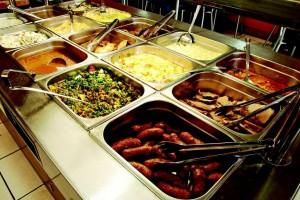 Eating out is supposed to be enjoyable. Yet, sometimes the food we eat in a restaurant makes us sick.
Eating out is supposed to be enjoyable. Yet, sometimes the food we eat in a restaurant makes us sick.
The Centers for Disease Control (CDC) stated, last week, that the Norovirus spread in restaurants accounts for two-thirds of all food poisoning outbreaks. The Norovirus, the leading cause of food poisoning outbreaks in the United States, sickens at least 20 million Americans a year with vomiting and diarrhea.
They CDC clarified that the Norovirus, often referred to as the “cruise ship virus,” is more often caused by infected restaurant workers than outbreaks on cruise ships, which only accounted for 1% of the more than 1,000 food-borne outbreaks examined by the federal Centers for Disease Control and Prevention.
Most outbreaks were the result of infected kitchen employees touching food with their bare hands, according to a new CDC agency report. Restaurant workers need better hygiene practices if these outbreaks are to be prevented.
For the report, CDC researchers looked at Norovirus outbreaks caused by contaminated food from 2009 to 2012 and included in CDC’s National Outbreak Reporting System. Restaurants accounted for nearly two-thirds of the outbreaks, and catering or banquet facilities accounted for 17 percent. Among 520 of the outbreaks, food workers were implicated in 70 percent of the cases. Of these, 54 percent involved food workers touching ready-to-eat foods with their bare hands, according to the report.
Among 324 outbreaks in which a specific food was implicated, more than 90 percent of the contamination occurred during final preparation, such as making a sandwich with raw and already cooked ingredients. Another 75 percent occurred in foods eaten raw, such as leafy
Tips for Preventing Food Poisoning When Eating Out
- Be Care of Salsa – The Center for Disease and Control says that salsa and guacamole are increasingly causing food poisoning since they are often made in large batches and not always refrigerated properly.
- Avoid Fish on Monday – If the chef bought fish for Saturday night and didn’t sell out, then by Monday night, it is not so fresh.
- Check Out the Staff– Cooks and staff should not be wiping their hands on their uniform (which harbors bacteria that can spread to food). Dirty aprons are not a good sign.
- Avoid Buffets and Salad Bars – The Food Poison Journal puts it bluntly: eat at a salad bar at your own risk. The Journal says this is one of the main places people get sick in a restaurant. Food in salad bars and buffets are rarely kept to the correct temperature. Also, lots of people touch both the food and the utensils.
- Beware of Specials – In high-end restaurants, specials can be great fresh meat or fish prepared using a unique recipe. In low-end restaurants, specials are sometimes a way to “fancy up” meat or fish that’s been sitting around awhile so they can get rid of it.
- Smell Your Food – Your food has a funny odor or taste, send it back.
- Chain Restaurants are Safer- According to MarketWatch, you’re statistically safer if you eat at a chain restaurant as they have much to lose if their diners get sick. Chains havethe resources to help manage food safety, as well as cleanliness standards that employees must maintain
- Send it back – If you rmeat is undercooked, send it back.
- Be aware of the temperature of your food – If the food is supposed to be hot, it should be steaming. If cold, you should be able to feel the coolness. Lukewarm anything is not safe.
Sources: Prevention; June 3, 2014, report, Vital Signs: Foodborne Norovirus Outbreaks — United States, 2009-2012, Journal of Food Poison


